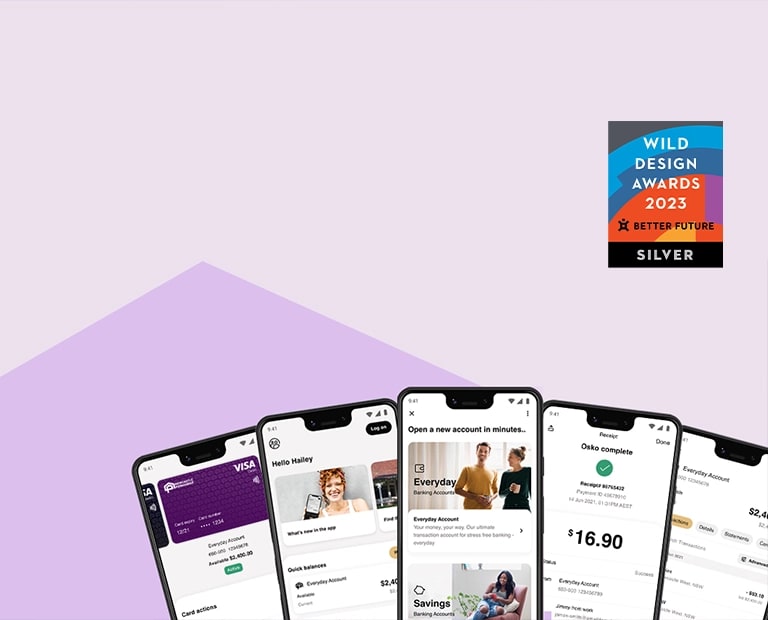Published: Aug 08, 2025
How COBA banks can compete on customer experience without a big bank budget
Customer-owned banks have long been trusted pillars in Australian communities, offering an alternative to the ‘Big Four’. But in an era of digital-first banking, smaller institutions face a growing challenge: How can a customer-owned bank deliver competitive digital customer experiences with fewer resources than a major bank?
While COBA banks may not be able to match the scale or spend of their larger rivals, they can compete - and win - by doubling down on their unique strengths and making targeted investments in digital experience.
In this update, Greg Barnett, Digital Experience Director, NCS, and Andrew Carr, Financial Services Director, NCS, explore the challenges, opportunities, and practical moves key decision makers at customer-owned banks can make to support their institution succeeding in a digital world.
The experience gap
The leading banks in Australia have invested heavily in digital transformation, user experience (UX) design, and AI-driven personalisation. Their apps are feature-rich, frictionless, and deeply integrated across services. In contrast, many COBA banks are still grappling with:
- Smaller or non-existent UX resources
- Legacy core systems that slow change
- Fragmented digital touchpoints
- Limited technical and design resources
This disparity can create a digital experience gap - where customer expectations shaped by major banks clash with the reality of more constrained offerings from smaller ones.
The COBA advantage
Scale isn’t everything – COBA banks bring strengths that big banks can’t easily replicate:
- Deep customer trust and local loyalty
- Agility through fewer layers of bureaucracy
- Mission-aligned values and community focus
- Freedom from shareholder pressure, enabling customer wellbeing
Unlike listed banks that must constantly balance customer needs with quarterly profit demands, COBA banks are owned by their customers. This means they can prioritise value over volume, invest in long-term trust-building, and design digital services with customer wellbeing - not just revenue growth - at the centre.
These attributes create an opening: COBA banks don’t need to match big-bank digital experiences feature-for-feature. They can focus on delivering meaningful, frictionless, and human-centred journeys in the areas that matter most to their customers.
Strategies for closing the gap
So, what can COBA banks do to close the gap – five key approaches include:
- Focusing on high impact journeys
- Building powerful yet lightweight UX capability
- Leveraging partnerships and platforms
- Use data intelligently, not excessively
- Investing in community programs
Strategic tip 1: Focus on high Impact Journeys
Rather than spreading investment thinly, COBA banks can identify the 3–5 most critical customer experiences (e.g., account opening, payments, loan applications) and make them exceptional. Use techniques like design sprints and rapid prototyping to co-create these with customers.
Strategic tip 2: Build powerful yet lightweight UX capability
Many smaller banks are finding success with part-time specialists, shared UX resources, or external consultants embedded in key projects.
Importantly, working with the right external consultants can have a secondary benefit: It brings fresh energy, exposes internal teams to modern practices, and acts as a catalyst for building internal capability over time. This hands-on collaboration often helps shift culture, upskill staff, and embed a more design-led, customer-centric mindset across the institution.
What's essential is remaining focused on putting customer needs at the heart of product and service design, whether the work is done in-house or with trusted partners.
Strategic tip 3: Leverage partnerships and platforms
Smaller banks don’t have to build everything in-house. Leveraging fintech partnerships, shared service platforms, or COBA-wide initiatives can accelerate innovation. Consider modular, API-based platforms that allow you to modernise customer experiences even on legacy cores.
Strategic tip 4: Use data intelligently, not excessively
Big banks may have armies of data scientists. But even small banks can use customer data to personalise communication, functionality, pre-fill forms, or automate follow-ups. Small wins here can have outsised customer impact.
Strategic tip 5: Invest in community programs
Reinvesting in the community isn’t just good citizenship – it can give your team a strategic advantage. Initiatives like those run by NGM Group, which invested over $6 million in community programs in a single year, build brand trust and deepen customer loyalty.
For member-owned banks, these efforts reinforce the idea that customers are not just users of the service – they’re owners and beneficiaries. Done right, community investment becomes part of the experience strategy, not just the corporate social responsibility strategy.
Human care and smart prioritisation as differentiators
COBA banks may not outspend the majors, but they can out-listen, out-care, and out-focus them. With smart prioritisation, lightweight design and tech capability, and a clear focus on what their customers truly value, customer-owned banks can deliver modern digital experiences – without losing what makes them different.
The opportunity isn’t to replicate the big banks. It’s to differentiate with purpose, and use digital to enhance – not replace – the human connection that’s always set COBA banks apart.
How NCS can help
At NCS, our team are deeply committed to delivering value for our clients, and we are adaptive to your needs. We understand the challenges that matter to COBA banks – and can help your team succeed in a competitive market.
Our experienced consultants get people – we understand what it takes to help your team create digital customer experiences that deliver a ‘wow’ factor for your customers with technology services that hit the mark, delivering value for money.
Curious? Reach out for a conversation today





